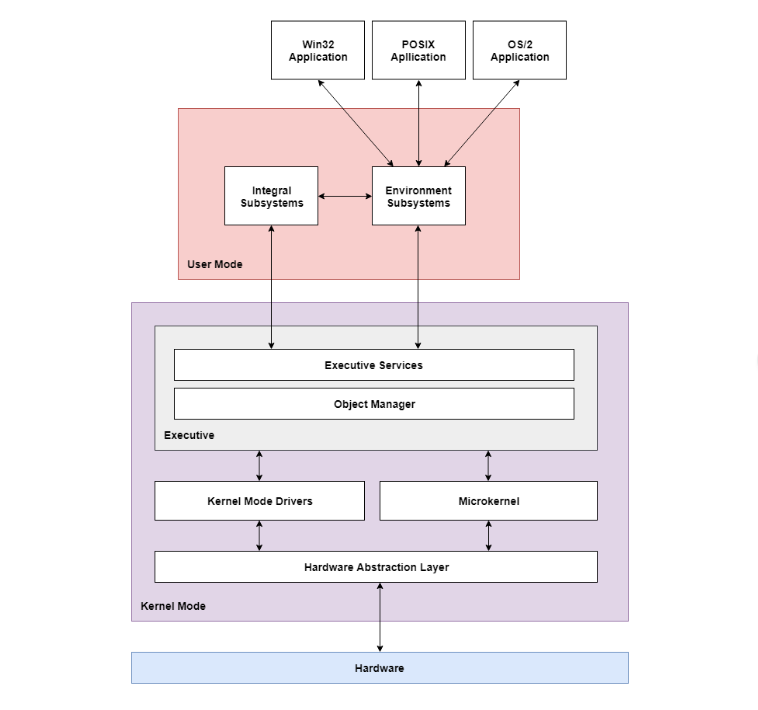
 Data Structure
Data Structure Networking
Networking RDBMS
RDBMS Operating System
Operating System Java
Java MS Excel
MS Excel iOS
iOS HTML
HTML CSS
CSS Android
Android Python
Python C Programming
C Programming C++
C++ C#
C# MongoDB
MongoDB MySQL
MySQL Javascript
Javascript PHP
PHPPhysics
Chemistry
Biology
Mathematics
English
Economics
Psychology
Social Studies
Fashion Studies
Legal Studies
- Selected Reading
- UPSC IAS Exams Notes
- Developer's Best Practices
- Questions and Answers
- Effective Resume Writing
- HR Interview Questions
- Computer Glossary
- Who is Who
Hybrid Operating System
Many operating systems are not based on one model of the operating system. They may contain multiple operating systems that have different approaches to performance, security, usability needs etc. This is known as a hybrid operating system.
The Hybrid operating system may allow one operating system to fulfil one set of requirements and the other operating system to fulfil the rest. For example, one of the operating systems may provide user interface, applications monitoring etc. while the other operating system may be a high-performance operating system that does not provide the same services as the first operating system.
Features of Hybrid Operating System
Some of the important features of the hybrid operating system are as follows −
- In a hybrid operating system, two operating system may execute on a single device. This can be done by dividing the memory and the processor between the operating systems. All the system resources would be shared between them.
- The two operating systems on a computer system may include a full-fledged operating system and a lightweight operating system. Both of these operating systems would fulfill different sets of tasks depending on their capabilities.
- One of the ways to install the two operating systems is to bootstrap the first operating system with all the system resources. Then half of the system resources are allocated to the first operating system and the second operating system is bootstrapped with the remaining system resources.
- Another method to handle two operating systems on the same device is to use hypervisors. This is a software layer between the hardware and the guest operating system which provides a virtualized hardware to the guest operating system.
- Both the operating systems in the hybrid environment may be aware of the other operating system and share resources with each other. For example, both the operating systems may have direct access to the hardware components such as memory, processor, BIOS etc and the operating systems may execute concurrently on the system.
Hybrid Kernel
The kernel is the core part of the operating system as it manages the operations of the computer as well as the hardware. The hybrid kernel attempts to combine the features and aspects of the microkernel and the monolithic kernel. This means that the kernel structure should be similar to a microkernel but the structure should be implemented like a monolithic kernel.
A well-known example of the hybrid kernel is the Microsoft Windows NT kernel. This kernel handles all the operating systems in the Windows NT family. It is called a hybrid kernel instead of a monolithic kernel as the emulation subsystems run on the user mode rather than the kernel mode, unlike in monolithic kernel.
The NT kernel cannot be called a microkernel as well. This is because almost all the system components run on the same address space as the kernel, which is a feature of the monolithic kernel.
A figure that illustrates the structure of the Microsoft Windows NT kernel is as follows −
There are mainly two layers in the Windows NT operating system architecture i.e user mode and kernel mode. The user mode contains the Integral Subsystems and Environmental Subsystems with various modules in each of them.
The executive part of the kernel mode contains the executive services and object manager. The executive services include I/O manager, IPC manager, process manager etc.
Apart from the executive mode, the kernel mode contains the kernel mode drivers, the microkernel and the hardware abstraction layer. The hardware abstraction layer is connected to the hardware.


